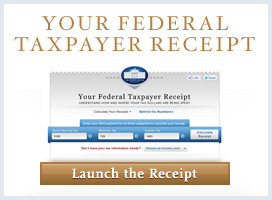OMB and Open Government
Posted by on April 07, 2010 at 01:30 PM EDT
When the President came into office, he underscored his commitment to changing the old ways of Washington by directing federal agencies to open government to the American people. In our first year in office, we have taken transformative steps that will permanently break down the barriers between the government and the citizens it serves.
Today marks a major milestone in this effort, as federal agencies are releasing their individual open government plans (you can find them at the White House Open Government site). These are concrete steps to make agency operations and data more transparent while building new ways for citizens to actively influence the priorities and policies of their government (be sure to check out OMB’s open gov plan).
As part of this effort, OMB is taking three concrete steps to open government up and modernize it to be more efficient, effective, and responsive to the American people.
First, we are clarifying the use of social media as it relates to the Paperwork Reduction Act (PRA), pulling the basic commitments of the PRA into the ever-changing world of instant communications and cutting-edge web tools. Too often, PRA requirements have made it difficult for agencies to interact with and be responsive to the American people — especially with 21st century technologies. That is why we are opening the door for agencies to engage with the public through many of the same social media tools that we all use regularly in our personal lives, without running afoul of the PRA. Among other things, we explain that agencies can have "public meetings" over the Internet without violating the PRA; that wikis, ratings, rankings, and online requests for general feedback are not subject to the PRA; and that certain types of contests and prizes are likewise not subject to the statute. Questions about such practices are frequently asked; the memo will promote public participation and provide much-needed clarification and guidance to agencies and the public alike.
We also are providing a PRA primer to give a clear, simple, transparent understanding of the law’s central requirements. Alert to the uses of modern technologies, and the importance of facilitating interaction between the public and the government, the primer is directly responsive to inquiries from the public and from agencies.
Second, we are also taking a significant step toward improving transparency in the rulemaking process. In the past, regulatory information online has been unnecessarily difficult to navigate, and members of the public often have difficulty searching, sorting, finding, or viewing documents at each stage of the process. To increase transparency, we are requiring agencies to use the Regulation Identifier Number (RIN) on all relevant documents throughout the entire "lifecycle" of a rulemaking. This seemingly small step will make it easier for members of the public to find and view all online information related to important rules — promoting public engagement in the rulemaking process.
Third, we are putting forward aggressive deadlines for compliance with the Federal Funding Accountability and Transparency Act. This law, which then-Senator Obama co-authored in 2006 with Republican Senator Tom Coburn of Oklahoma, required the federal government to provide more user-friendly and more detailed information about how it spends your money. In the ensuing years however, little was done to move from passing the law to implementing it. Since coming into office, this Administration has picked up the pace in implementing this law, pressing forward with the technology and policy changes necessary to meet the Transparency Act’s requirements.
Building on work we have done in implementing the Recovery Act, we will begin on October 1 collecting data on subawards — funding awards made to a subrecipient or a subcontractor by a primary grant recipient or contractor — for all federal funds, and this data will be made available for all to see on USASpending.gov. The Recovery Act was our first opportunity to track federal funds to the sub-recipient level, and it has provided an unprecedented look into how the American people’s tax dollars are being spent. While there is much to learn and more work to be done to fine tune the data collected at this fine a level, we are ready to take what we have learned this past year and begin to meet the goals of the Transparency Act.
These are important steps, but not the only ones that OMB will take to open the federal government to today’s technologies — more will come in the weeks ahead. Guiding our work is a commitment to translate the values of transparency and accountability into lasting improvements in how the government makes decisions, solves problems, and addresses national challenges.
White House Blogs
- The White House Blog
- Middle Class Task Force
- Council of Economic Advisers
- Council on Environmental Quality
- Council on Women and Girls
- Office of Intergovernmental Affairs
- Office of Management and Budget
- Office of Public Engagement
- Office of Science & Tech Policy
- Office of Urban Affairs
- Open Government
- Faith and Neighborhood Partnerships
- Social Innovation and Civic Participation
- US Trade Representative
- Office National Drug Control Policy
categories
- AIDS Policy
- Alaska
- Blueprint for an America Built to Last
- Budget
- Civil Rights
- Defense
- Disabilities
- Economy
- Education
- Energy and Environment
- Equal Pay
- Ethics
- Faith Based
- Fiscal Responsibility
- Foreign Policy
- Grab Bag
- Health Care
- Homeland Security
- Immigration
- Innovation Fellows
- Inside the White House
- Middle Class Security
- Open Government
- Poverty
- Rural
- Seniors and Social Security
- Service
- Social Innovation
- State of the Union
- Taxes
- Technology
- Urban Policy
- Veterans
- Violence Prevention
- White House Internships
- Women
- Working Families
- Additional Issues

